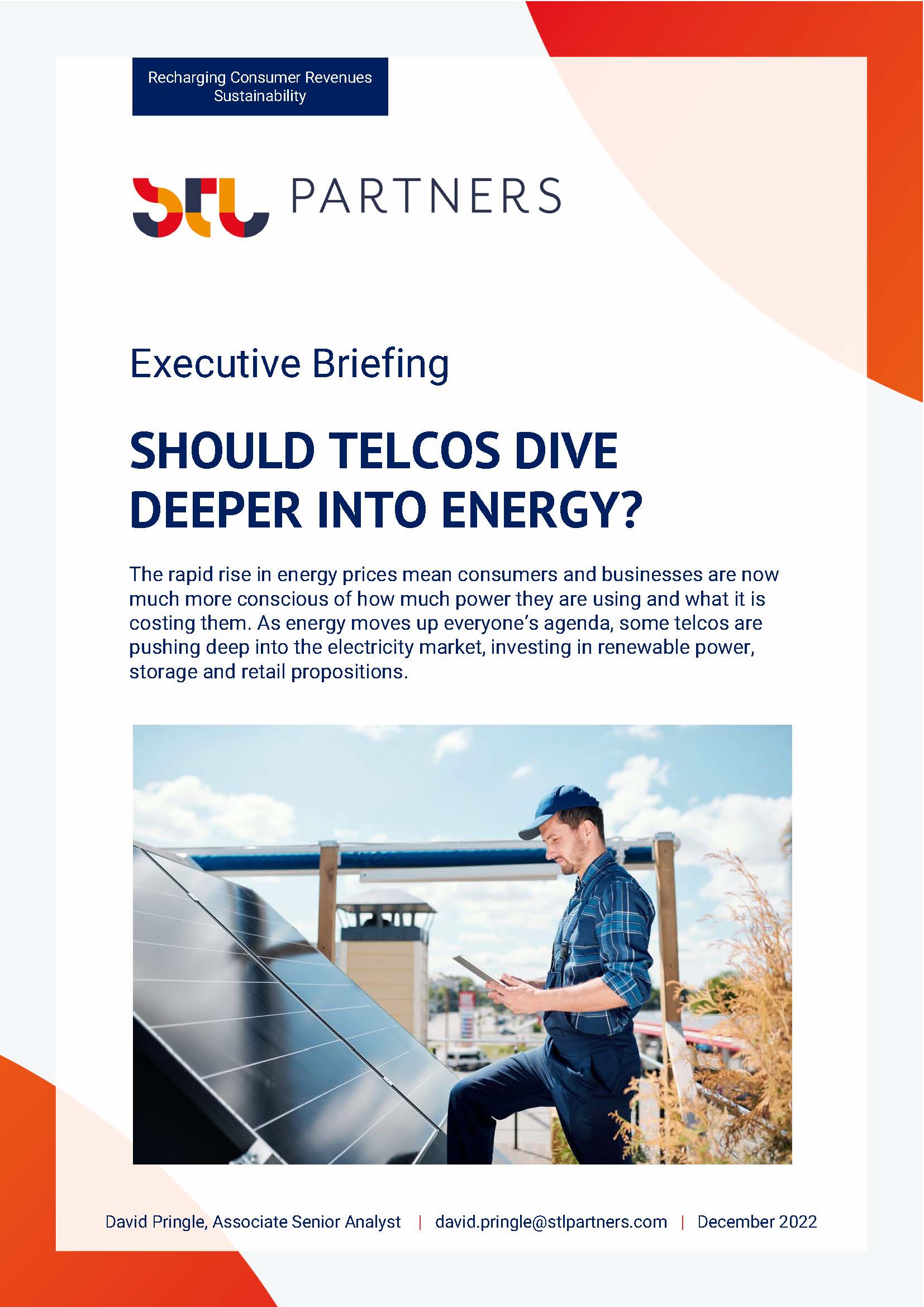Should telcos dive deeper into energy?
£3,000.00 excl VAT
The rapid rise in energy prices mean consumers and businesses are now much more conscious of how much power they are using and what it is costing them. As energy moves up everyone’s agenda, some telcos are pushing deep into the electricity market, investing in renewable power, storage and retail propositions.
Description
Format: PDF filePages: 52 pagesCharts: 22Author: David PringlePublication Date: December 2022
Table of Contents
- Executive Summary
- Introduction
- Extensive distribution networks
- Case study 1: Polsat Plus – bundling telecoms & electricity
- Case study 2: Orange Energy Africa – distributing solar kits
- Established Brands
- Case Study 1: Singtel Power – taking on the incumbent
- Case study 2: Building a Reliance Jio for energy
- Billing relationships and payment mechanisms
- Case Study: MTN Nigeria – Pay as you go solar
- Existing connectivity and IoT expertise
- Case study 1: Telefónica España – monitoring solar panels
- Case study 2: Proximus – electric vehicle charging
- Energy buying and management expertise
- Case study 1: Vodafone – enabling energy data management
- Case study 2: Elisa – balancing the electricity grid
- In depth case study: Telstra Energy
- The strategic justification
- How the IoT and AI can help
- The Economics of Energy Retailing
- An even tighter regulatory regime
- Telcos and energy storage and generation
- Competition from other investors
- Planning permission
- Grid connections
- Engaging consumers
- Ripple Energy – consumer ownership
- Conclusions
Table of Figures
- Figure 1: The moves that telcos could make in the energy sector
- Figure 2: In 2022, energy prices have surged around the world
- Figure 3: MEO Portugal offers discounts to consumers who buy its energy service
- Figure 4: Polsat Plus believes renewable energy’s time has come
- Figure 5: Polsat Plus is investing in different forms of renewable energy
- Figure 6: Polsat Plus believes energy complements connectivity and content
- Figure 7: Solar360 offers solar installation and monitoring services
- Figure 8: Proximus’ branding on its first EV charging points in Mechelen, Belgium
- Figure 9: How Telstra’s energy strategy is evolving
- Figure 10: Telstra’s “simple and sustainable” energy proposition
- Figure 11: Changing when key appliances are used can smooth out demand peaks
- Figure 12: Telstra says EV batteries could help renewables cope with demand peaks
- Figure 13: How Telstra is trying to adjust its business with changes in energy prices
- Figure 14: Combining renewable energy and batteries could lower cost of energy
- Figure 15: A breakdown of where the money goes in energy retailing in the UK
- Figure 16: The UK domestic energy is experiencing rapid inflation despite a price cap
- Figure 17: UK energy retailers have mostly been losing money in recent years (domestic supply profits)
- Figure 18: In the energy business, generation is far more profitable than distribution
- Figure 19: Tesla’s shipments of energy storage surged in the third quarter
- Figure 20: Land being used to generate solar power and grow food simultaneously
- Figure 21: Ripple Energy is using real-time energy data to engage consumers
- Figure 22: How telcos can help tackle the challenges in the energy sector
Technologies and industry terms referenced include: AI, connectivity, electricity consumption, Elisa, energy, energy consumption, energy storage, IoT, Jio, MTN, Orange, Polsat Plus, Proximus, renewable energy, retail, Ripple energy, Singtel, storage, Telefonica, Telstra, Vodafone


